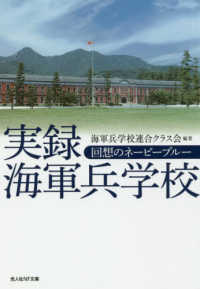- ホーム
- > 洋書
- > 英文書
- > Psychology
Full Description
One of the most important practical problems in child psychology and psychia try is the differential diagnosis of emotional disorders. Understandably, this approach was controversial, and dissat isfaction with it led to the more recent knowledge that adult and child problems may be manifested quite differently.

![機械保全の徹底攻略[電気系保全作業] 〈2025年度版〉](../images/goods/ar2/web/imgdata2/48005/480059362X.jpg)





